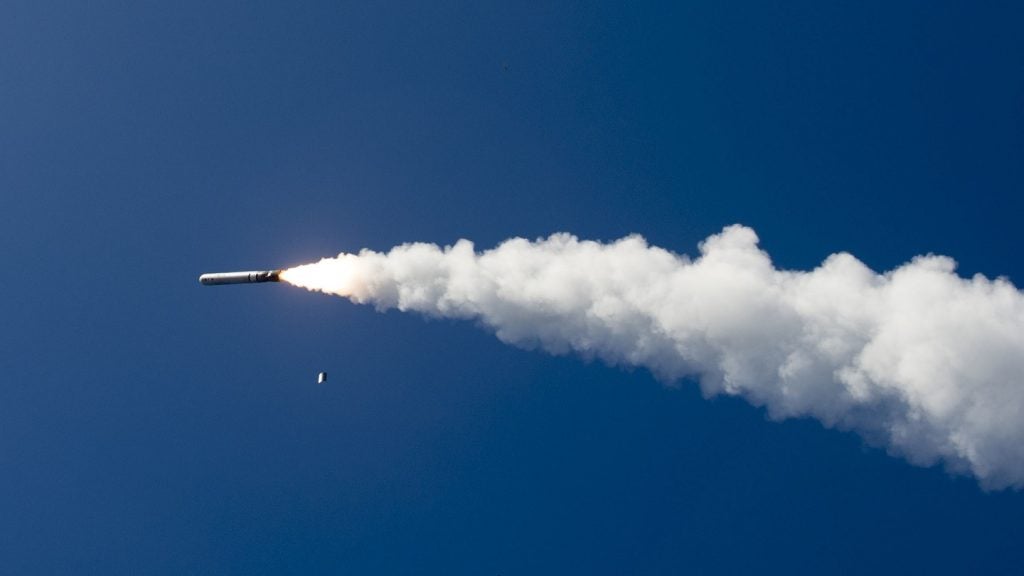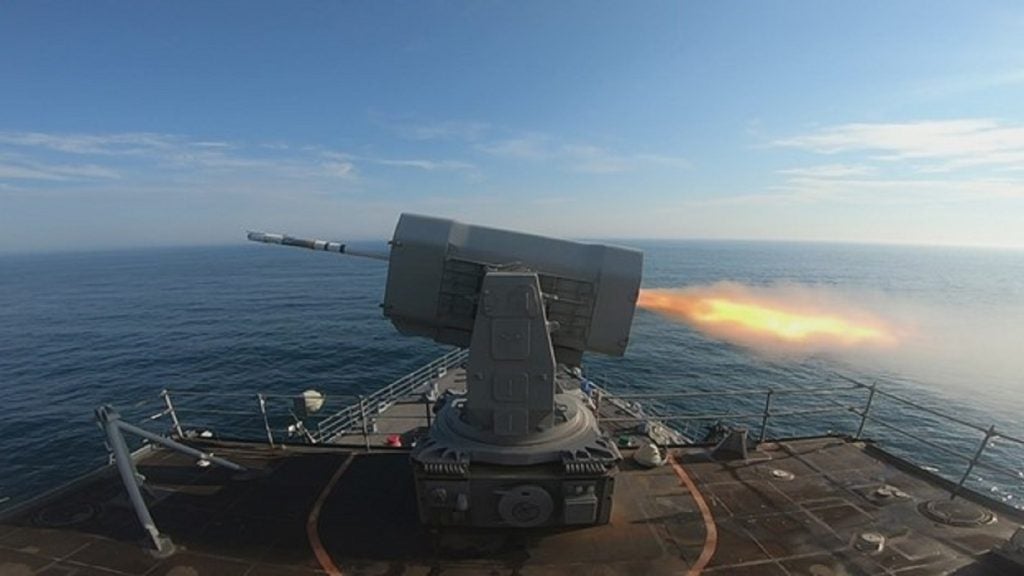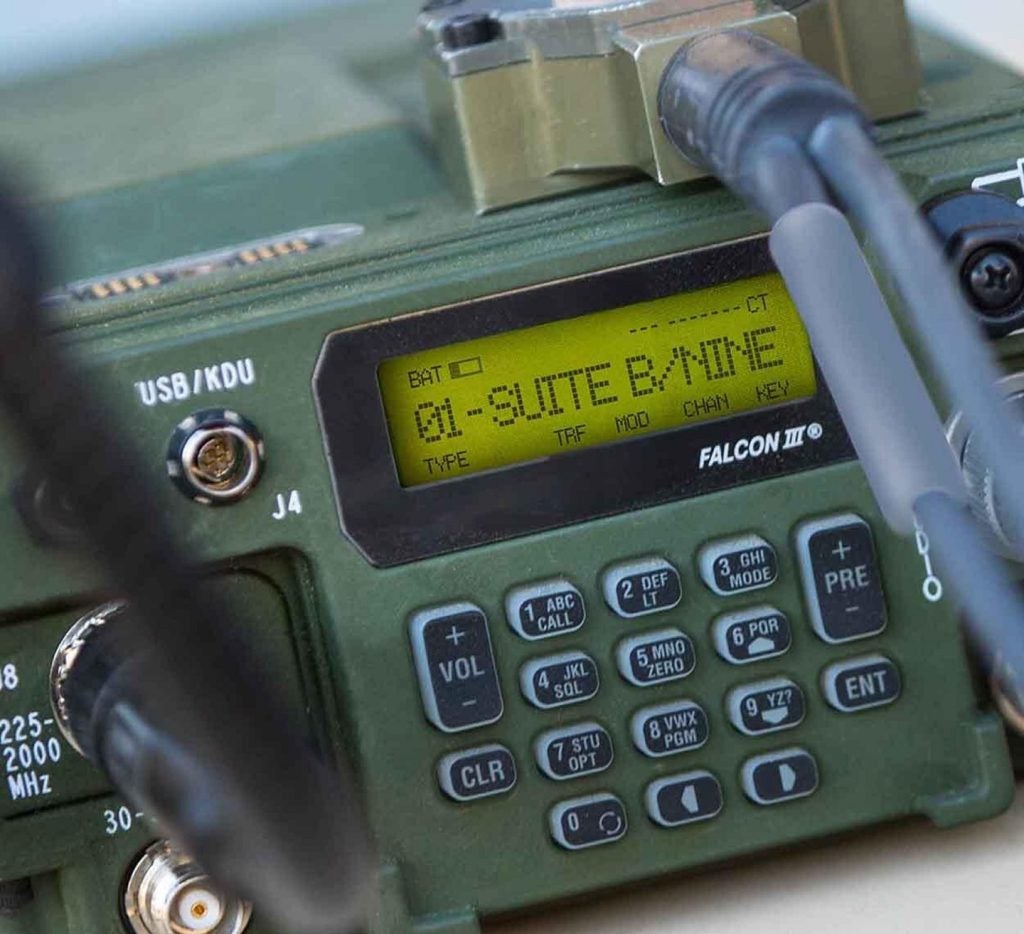Reports that the US Navy will begin operating an anti-surface variant of the Tomahawk cruise missile from its submarines in 2024, known as the Maritime Strike Tomahawk (MST), have highlighted the development of a lesser-known variant of the long-serving munition, which entered service in the 1980s.
According to office of the US Director, Operational Test and Evaluation (DOT&E) in 2017 the US Navy issued an acquisition strategy for a series of incremental upgrades to the Tactical Land Attack Missile (TLAM) Block IV to develop an anti-ship capability. The upgrades would develop the Block IV TLAM into the MST variant, to aspirational reach initial operational capability (IOC) in FY2022.
Manufacturer RTX states that beginning in 2020, the US Navy would recertify and modernise the missile, extending its service life by 15 years, and resulting in the new Tomahawk Block V series; the Block V, a modernised version with upgraded navigation and communication; the Block Va which has the ability to strike moving targets at sea, the MST variant; and the Block Vb, which features a joint multi-effects warhead that can hit a more diverse land targets than the standard Block V.
US military services have been keen to introduce the new Block V into their inventories, with a series of contracts providing industrial impetus for RTX and its supplier base.
In August it was reported that RTX, formerly Raytheon, secured a $124.2m contract worth to enhance the capabilities of Maritime Strike Tomahawk (MST) missiles for the US Navy. The developmental MST seeker suites are a component of the weapon’s recertification process, currently underway with the Low-Rate Production Three initiative.
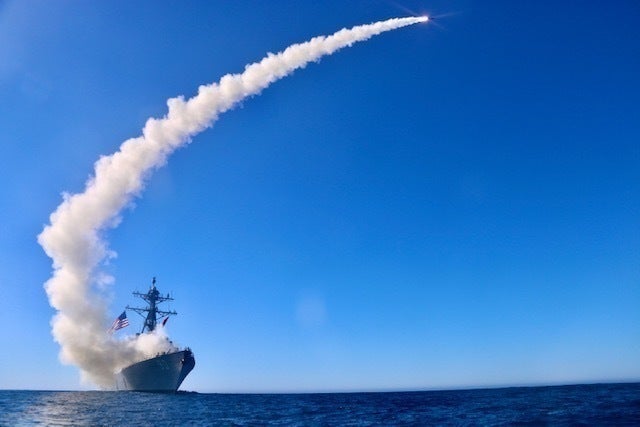
In 2022, RTX, then Raytheon Technologies, was awarded a $217.1m fixed-price-incentive, firm-fixed-price contract for the full-rate production of Block V Tactical Tomahawk missiles, to be delivered to the US Navy, US Marine Corps, and US Army.
Further back, in August 2019 Raytheon received a $349m contract for phase two of the MST Rapid Deployment Capability to improve the Tomahawk cruise missile system.
The Tomahawk is a key weapons system manufactured by RTX, which has sought to maintain its relevance in the evolving battlespace through spiral development and upgrades. As a result, RTX garners a considerable share of the global missile market, partly as a result of the famed TLAM.
According to GlobalData’s “The Global Missiles & Missile Defense Systems Market 2023-2033” report, 22.0% of the North American missiles and missile defence systems market is owned by RTX, which is projected to be the second largest shareholder in the region.
International appeal of the Block V
Asia-Pacific countries such as Japan and Australia have procured Tomahawk Block IV missiles, while in Europe the UK will likely operate them from the Type 26 City-class frigates, currently in build. The UK Royal Navy has operated the TLAM from its Astute-class nuclear-powered attack submarines for a number of years.
However, legacy operators in recent years have moved to upgrade existing Block IV stock to Block V, either through recertification or acquisition of new missiles.
Japan planned to upgrade all eight of its Aegis destroyers to install Tomahawk cruise missiles, and Australia requested a sale of $895m for Tomahawk missiles from the US to boost their maritime capabilities and improve interoperability earlier this year.
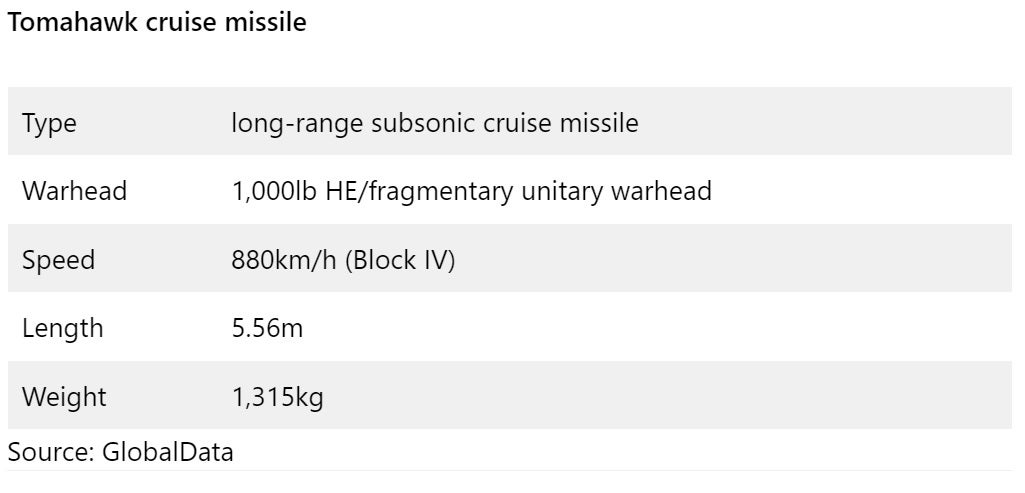
Indeed, in November this year the US State Department made a determination approving a possible Foreign Military Sale (FMS) to the Government of Japan of Tomahawk Weapon System and related equipment for an estimated cost of $2.35bn. The request was for up to 200 Tomahawk Block IV All Up Rounds and 200 Tomahawk Block V AURs, along with weapon control systems.
Earlier, in March this year the US approved the possible FMS of 200 Block V and 20 Block IV Tomahawk missiles to Australia, with a deal valued at $895m.
In May 2022, the UK announced that its stock of Block IV TLAM munitions were to be upgraded to the Block V variant for specific use in the Astute-class submarines. The Block V, according to UK Defence Equipment and Support, an arm of the Ministry of Defence, would have a longer range than the Block IV at up to 1,000 miles, and also has updated in-flight communications and target selection.
The Netherlands has also confirmed that it would acquire the Block V Tomahawk for use in its De Zeven Provinciën-class frigates.
Any acquisition of the MST for countries such as the UK would add a useful anti-surface warfare system to the inventory, particularly as the development of next generation anti-ship missiles, such as the Future Cruise/Anti-Ship Weapon (FC-ASW), with the UK and France, are someway off being fielded.
With the Block V, and through it the Va and Vb variants, likely to remain in service for more than a decade and even up to the 2040s, this would provide vital development time for countries seeking next-generation ASW systems.


